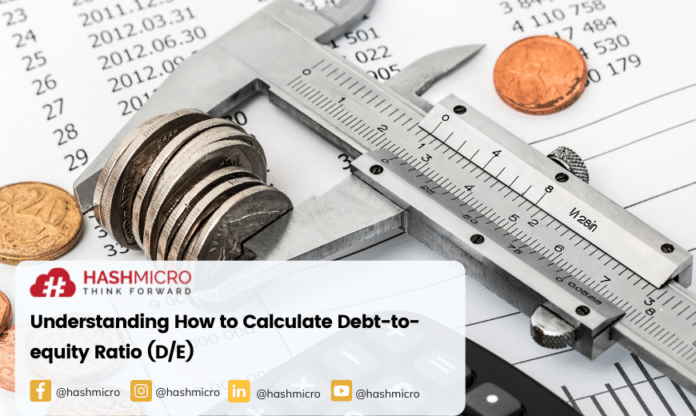In supporting the company’s operations runs well, often the company uses debt. Therefore, To manage it well, you need a financial management system. A financial ratio in accounting can measure the composition of a company’s debt. This financial ratio is familiar with the debt-to-equity ratio (D/E). Without this financial ratio, the company will not get information for strategic decision-making considerations. This article will provide information to readers about understanding the definition and how to calculate D/E. Therefore, see the following explanation!

Table of Content:
Table of Content
Debt-to-Equity Ratio (D/E) Definition

According to Investopedia, the debt-to-equity (D/E) ratio is used to evaluate a company’s financial leverage and is calculated by dividing its total liabilities by its shareholder equity. The D/E ratio is an important metric used in corporate finance. The debt-to-equity ratio is familiar with the term leverage ratio. In this case, the ratio is often used to take measurements of an investment in the company. Experts also expressed their opinions on the D/E ratio definition. One of them is Kasmir (2014: 157) who said that the debt-to-equity ratio is used to assess debt with equity. This ratio is sought by comparing all debt, including current debt with all equity.
Also read: 4 Key Benefits of Using an Accounting App
Debt-to-Equity Ratio Functions
After knowing its definition, of course, you might be wondering about its functions. D/E has the main function of finding out the composition of a company’s debt and equity. Information about this composition is very necessary for companies to make decisions. Not only that, but D/E can also identify the company’s ability to pay debt or credit. The D/E ratio also functions as a consideration for creditors’ credit provision and investors’ consideration when making investment decisions.
D/E Formula and How to Calculate It
Here is the formula for calculating D/E:
Debt/Equity = Total Liabilities / Total Shareholders’ Equity
Explanation:
- Debt is an obligation that the company must pay to the debtor.
- Equity is the right to assets or assets that the company owns. In this case, you need an asset management system to manage every company’s assets. Equity consists of capital and the remaining retained earnings.
For your information, based on the repayment period, debt can be categorized into several types, such as current debt and long-term debt. Current debt is a short-term obligation. The examples are related to the company’s operational activities, such as employee salaries and debts to suppliers. The second type of debt is long-term debt. In this case, long-term debt is the type that companies should avoid. This is because long-term debt has a large nominal and interest. An example of this type is a bank loan.
Example of D/E Calculation
Orange Fine Pte Ltd., in its 2018 annual financial statements, has a total of 2,500,000,000 and a capital amount of 1,200,000,000. The debt-to-equity ratio (D/E) of Orange Fine Pte Ltd. is:
D/E = 2,500,000,000 / 1,200,000,000 x 100%
D/E = 2,083 times or 208.3%
Therefore, the D/E of Orange Fine Pte Ltd. is 208.3%.
Conclusion
Debt-to-equity (D/E) ratio is able to evaluate a company’s financial leverage and is calculated by dividing its total liabilities by its shareholder equity. Therefore, the company can find out the composition of the company’s debt and equity. Not only that, debt-to-equity has a function as consideration for creditors in credit provision and investors in making investment decisions.
Speaking about accounting, HashMicro, as a leading ERP software provider, presents a solution to improve the effectiveness and efficiency of recording transactions to create accurate financial statements using Accounting Software. This software has top features such as a financial dashboard, cash flow forecasting, and fast bank reconciliation. Contact us now to get the best deals and a free demo!




































